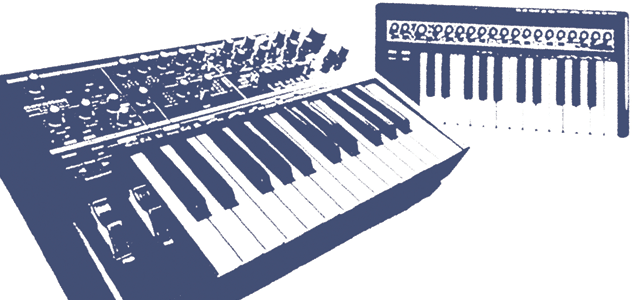It’s no secret that we’re right in the middle of an analog synthesizer renaissance. We’ve seen consumer demand go through the roof for all things analog. This has a lot to do with “vintage” and “retro” being buzzwords, but there are also other contributing factors. They include the prevalence of EDM, a resurgence of ’80s pop and even an increased appreciation (sometimes an ironic one) of all things “geek.” There’s also a distinct and growing appreciation for the individual characteristics of classic analog synths. Each one has a personality all its own: a trait that is commonly (and mistakenly) seen as lost with modern digital instruments.
The impact of analog synthesizers in the ’60s, ’70s and ’80s can’t be overstated. Pioneers like Wendy Carlos and Keith Emerson brought early modular synthesizers to the public ear, both in production environments and onstage. This paved the way for the creation of self-contained synthesizers that were portable, more affordable and simpler to operate.
Retailers find themselves in an interesting position with the new (and reissued) analog synths that are now available. Whereas, at one time, they were sold based on their advanced technology, they are now sold based on factors that include vintage appeal, personality and “true analog” credibility. This presents a number of challenges. First among these is that inexperienced customers who are excited by the prospect of a real analog synthesizer are very often also surprised by the limitations. For example, the fact that many analog synths are monophonic shocks people who expect to be able to play chords. And “saving” a sound often means taking a picture of the controls.
With the inherent limitations of analog synthesis in mind, manufacturers and retailers alike must educate a new generation of music makers on why they would want an analog synth in the first place. The combination of great sound and hands-on fun are the biggest selling points. It’s important to get a customer’s hands on the controls and to demonstrate with him/her driving. The magic moment comes when the feeling of being overwhelmed by controls transforms into a desire to explore. This means retailers also have to be instructors.
The above quote (or, if it’s apocryphal, misquote) from Bach is a beautiful, humble simplification of his genius. Taken literally, though, it comes to encapsulate something that people have come to expect because of the convenience of modern keyboards. Modern synths, with their easy sound selection and loads of presets, have made it so that it isn’t necessary for customers to understand fundamental synthesis concepts; they simply choose a sound, maybe make a few tweaks and then play. With many analog synths, it’s all about knobs and sliders. To get a musically useful sound, you really need to know the basics of subtractive synthesis. This is where younger, more ambitious musicians often need a helping hand.
Manufacturers also often meet older players who owned the original incarnation of a reissued synth and who are curious why the company’s “gone back in time.” These customers were around for the advent of digital synths (and all the miraculous conveniences they represent). The manufacturer community is also responsible for reeducating the market with regard to why these synths are back. Typical questions include the following: “Does this stay in tune? Does it sound exactly like the original did?” (In both cases, the answer is generally yes.) Sometimes, a question about the manufacturing quality will come up. Such questions can be difficult to navigate, because factories and regions that, previously, were known for compromised quality have improved dramatically in recent years.
Again, we find the best thing to do is to let them get their hands on it. The reaction usually starts with a fond, “I remember this!” Then, they start editing, remembering tricks they discovered 30 or 40 years ago. Then, they remember the potential that the synth represented at the time. The smile gets bigger and bigger as they realize the potential, even now, has yet to be fully tapped.
If a dealer sells a user a keyboard that he or she doesn’t understand, the chances are good that it’s going to come back. Thus, retailers now also have the task of qualifying customers before the sale: asking them about their knowledge of synthesizers prior to selling them one that will require an understanding of how to create sound. Of course, knowing what other instruments the customer has goes a long way in this regard. If he or she has a basement full of vintage analog gear, chances are good that that person will know what “ADSR” stands for.
If, on the other hand, the customer is simply looking to add some analog flavor to a stage piano rig, it’s important to gauge his or her comfort level with basic sound design. That person will need to know what an oscillator is, how an envelope can modify the sound over time, the many uses of a low-frequency oscillator, how different types of filters work and so on. Depending on the dealer’s structure and practices, this can also create additional opportunities for a savvy salesperson who is willing to go the extra mile. If a customer needs extra help, there’s always the option to make house calls or host workshops. Along with putting a little extra cash in a salesperson’s pocket, this can also help solidify your business as the go-to resource for musicians in the area.
There’s no denying that analog is back. These instruments sound great, they’re fun to use and, even as we recognize their limitations, we know they’re endless sources of innovation. But, to make this renaissance last, manufacturers and retailers must work together to ensure customers know exactly what they are getting into.
James Sajeva is Product Manager with Korg USA, Inc.


